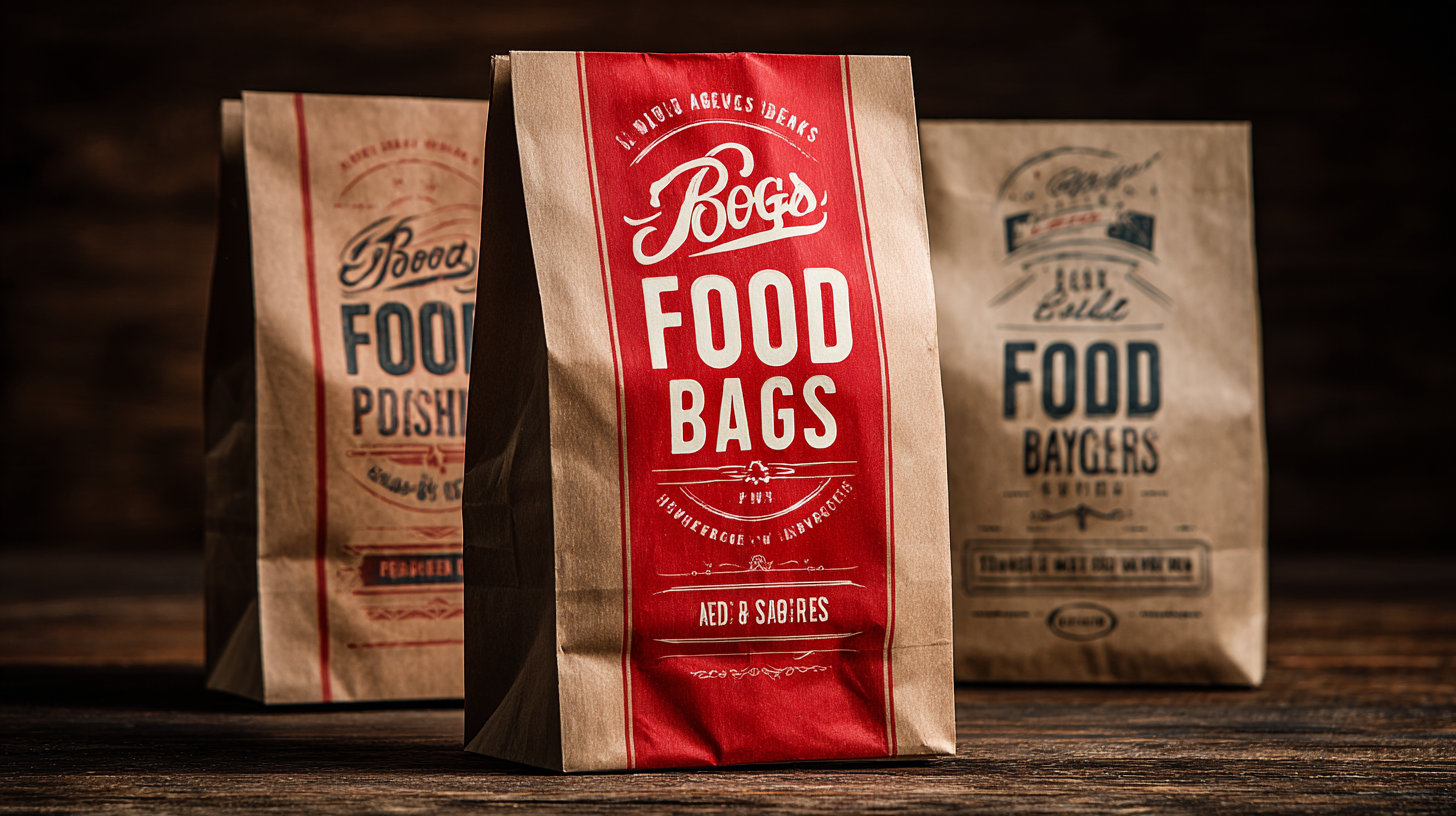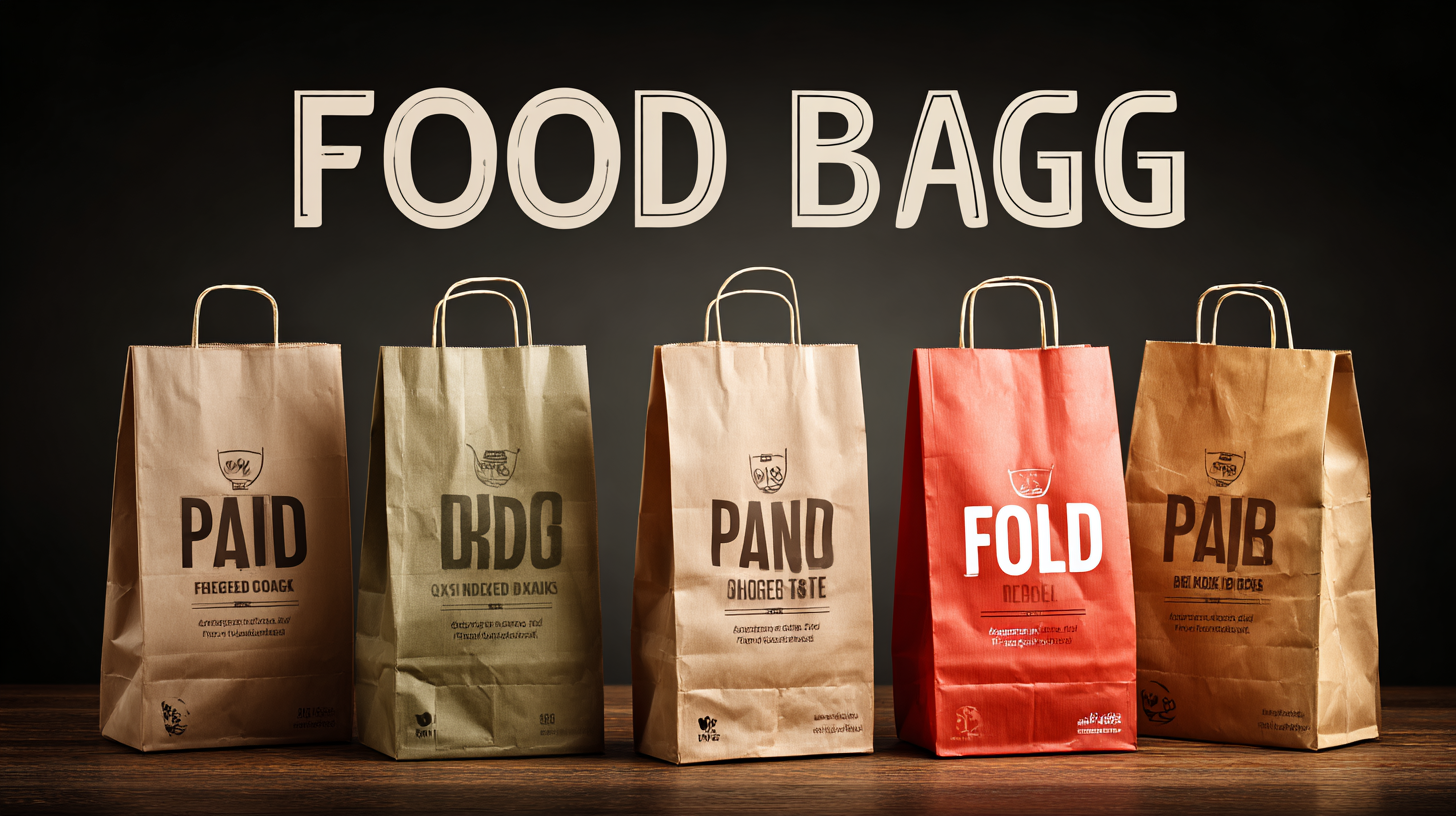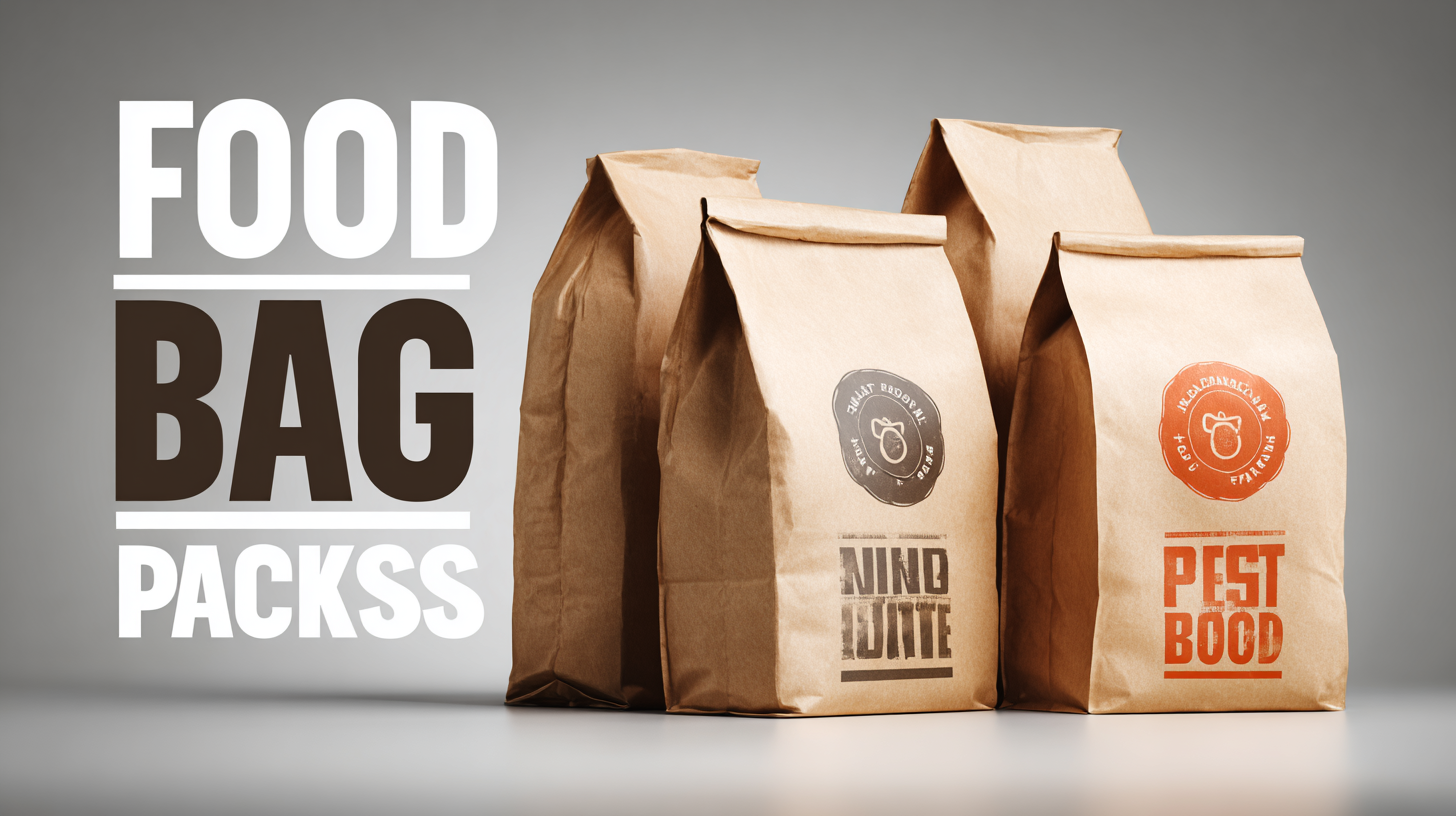Advantages of Using Best Food Packaging Bags for Your Business
In the evolving landscape of food production and distribution, the role of effective packaging cannot be overstated. A report from MarketsandMarkets indicates that the global food packaging market is projected to reach $500 billion by 2025, highlighting the increasing importance of high-quality food packaging solutions. Among these, the Food Packaging Bag stands out due to its versatility, cost-effectiveness, and ability to preserve freshness, making it an invaluable asset for businesses. With more consumers demanding sustainable and safe packaging options, investing in the best food packaging bags can lead to enhanced brand reputation and customer loyalty. This checklist outlines the advantages of utilizing high-quality food packaging bags, detailing how they can not only improve product shelf life but also contribute to a more sustainable environment, thus positioning your business for success in a competitive market.

Benefits of Quality Food Packaging Bags for Businesses
When it comes to the food industry, the importance of quality food packaging bags cannot be overstated. Not only do they serve the critical purpose of protecting food from contamination and spoilage, but they also play a significant role in influencing consumer purchases. Effective packaging can communicate brand values and product quality, directly impacting sales. Businesses that invest in high-quality packaging often benefit from enhanced customer loyalty, as appealing designs and reliable protection reinforce consumer trust.
In today’s market, sustainability is becoming a major factor in packaging decisions. With growing concerns about climate change and plastic pollution, there is a clear demand for eco-friendly packaging solutions. Businesses that adopt sustainable practices, such as using biodegradable materials or innovative designs that minimize waste, can attract environmentally conscious consumers. This shift not only benefits the planet but also positions companies as responsible players in the food industry. By choosing the best food packaging bags, businesses not only improve their operational efficiency but also align themselves with the evolving preferences of modern consumers, thus gaining a competitive edge.
Key After-Sales Support Services for Food Packaging Solutions
In the competitive landscape of the food packaging industry, after-sales support services play a crucial role in ensuring sustained business success. As the global food service packaging market size is projected to reach around USD 160.44 billion by 2032, companies must prioritize not only innovative packaging solutions but also robust after-sales support to address client needs effectively. Services such as regular maintenance, prompt troubleshooting, and training for staff can significantly enhance the longevity and functionality of packaging solutions, fostering customer loyalty and repeat business.
Tips for effective after-sales service include establishing a dedicated support team that is readily accessible for clients, offering comprehensive training sessions on the utilization of packaging equipment, and maintaining an inventory of essential spare parts to minimize downtime. Such measures not only enhance operational efficiency but also ensure that food businesses can adapt to the evolving regulations and market demands, such as the recent shifts towards sustainable and recyclable packaging options.
Furthermore, with recent advancements in flexible packaging technologies, companies that provide tailored solutions along with strong after-sales support are likely to capture a larger market share. Businesses can benefit from monitoring trends in packaging materials and regulations, allowing them to pivot and adjust their offerings to remain compliant and competitive in a rapidly changing market.
Advantages of Using Best Food Packaging Bags for Your Business
This chart illustrates the key advantages of using high-quality food packaging bags for businesses. As shown, cost efficiency, product freshness, and customer satisfaction are the top benefits, emphasizing the importance of effective packaging solutions in the food industry.
Understanding Repair Costs Associated with Food Packaging Bags
The food packaging industry is evolving, and understanding repair costs associated with packaging bags can significantly impact your business's bottom line. As the paper bags market is projected to reach USD 7.81 billion by 2029, investing in durable and reliable packaging solutions becomes essential. Damaged packaging can lead to product spoilage and decreased consumer trust, resulting in higher repair and replacement costs. Businesses that fail to prioritize quality may find themselves incurring unexpected expenses that can quickly add up.
To optimize your investment in packaging, consider these tips: First, choose packaging materials designed to withstand various environmental factors. Investing in high-quality paper bags can reduce the likelihood of tears or leaks, directly minimizing repair costs. Second, perform regular quality checks on your packaging stock. Identifying and addressing any defects early on can save you significant repair costs in the long run. Lastly, work with suppliers who prioritize sustainability and quality; they often provide valuable insights on reducing overall packaging costs while maintaining product integrity.
By understanding the implications of repair costs in food packaging, businesses can make informed decisions that promote growth and efficiency in a competitive market.

Tips for Choosing the Right Food Packaging Bags for Your Needs
When choosing the right food packaging bags for your business, it's essential to consider several key factors to ensure compliance with the latest regulations, such as the recent implementation of Guangdong's stringent plastic ban. With the prohibition of non-biodegradable plastic bags, businesses must pivot towards more sustainable options. Look for food packaging bags that are not only eco-friendly but also meet health and safety standards. Compostable and recyclable materials are becoming increasingly favored in the market, offering a responsible alternative that appeals to environmentally-conscious consumers.

In addition to sustainability, consider the functionality and durability of your food packaging bags. They should effectively preserve the freshness and quality of your products while being user-friendly for customers. Assess the size, design, and seal type to ensure they meet your specific needs. The right choice will enhance your brand's image and foster customer loyalty. Engaging with suppliers who prioritize sustainability can also enhance your supply chain and contribute positively to your business’s reputation in this evolving marketplace.
Digital Innovations in Food Packaging: Enhancing Efficiency and Appeal
Digital innovations are revolutionizing the food packaging industry, creating packaging solutions that enhance efficiency and consumer appeal.
According to a report by Mordor Intelligence, the global food packaging market is projected to reach approximately $500 billion by 2027, driven by advancements in materials and technology.
Smart packaging, which integrates sensors and QR codes, not only extends shelf life but also provides real-time data on food freshness, thus reducing food waste by up to 30%.
Moreover, automated packaging processes powered by AI and robotics streamline operations, reducing labor costs and increasing production speed.
A study by Smithers Pira reveals that the use of automation in food packaging can lead to a 20-30% reduction in operational costs while enhancing safety and compliance—a crucial factor in an industry governed by strict regulations.
These innovations not only create efficient production lines but also elevate consumer experience through attractive designs and interactive features, making food packaging a pivotal element of branding strategies.

 中国
中国